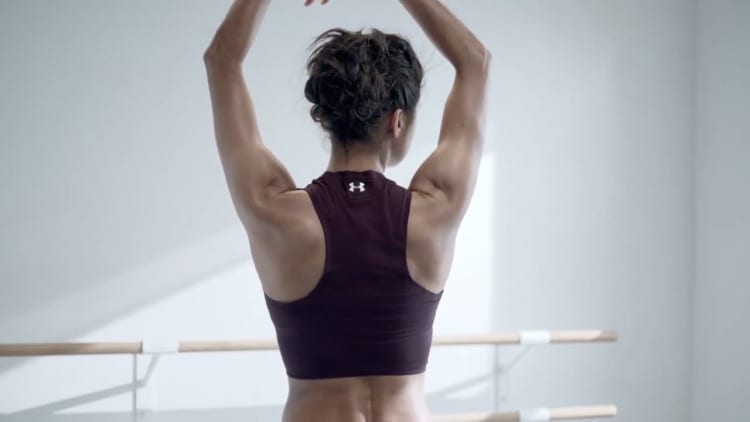For decades, Under Armour has been known as a brand built on masculinity; one that caters to an audience of fit male athletes. We are all too familiar with the cliché Under Armour ads that feature hefty men with defined biceps and sweaty bodies practicing their football and/or basketball skills, running, or working out.
However, recently Under Armour has started to redefine its image to appeal to a completely different target audience: women. In the summer of 2014, the company launched a beautiful video ad campaign featuring ballerina Misty Copeland, a soloist with the American Ballet Theatre, the third ever African American to hold that title. The ad sets the stage for the brand’s new aim to engage women athletes and promote female empowerment.
Even though Copeland does not practice or perform on a field or in a jersey, she is very much an athlete. In fact, she has used her athleticism to defy social stereotypes and pursue her dream of becoming a professional ballerina.
The company follows in the footsteps of similar campaigns from companies such as Dove and Pantene, which promote positive self-image for women and expose the wrongful stereotypes associated with womanhood and femininity.
As an African American, Copeland was always told that she did not possess the right physical characteristics of a ballerina. While ballerinas are commonly thought of as being Caucasian, tall and slender, Copeland is 5’2” with a curvy physique and extremely defined muscles. She comes from a low-income household and started ballet when she was 13 years old—a very late age to begin. She broke the mold of what it means to be a “typical” ballerina and has since become an icon for ballerinas and female athletes all over the world.
In addition to being audiovisually compelling, the ad inspires viewers with its innovative and authentic storytelling. It masterfully conveys Copeland’s struggles as an African American ballerina, with the rejection letter voiceover signifying the discouraging feedback Copeland has received about her physical “shortcomings” throughout her career.
While she may have been told that she “has the wrong body for ballet,” the ad visually showcases the ways in which Copeland challenges those social expectations. Viewers can’t help but get the chills, which makes it such a successful piece of branded content.
We see her on pointe with beautifully toned calves, leaping through the air and twirling across a stage. What she is doing looks effortless, although every movement is carefully perfected.
The end of the commercial ends in the slogan “I Will What I Want,” a new modification to Under Armour’s previous tag “I Will.” It is clear that the company is rebranding itself to convey the idea that women can (and do) succeed when they follow their passions.
Under Armour’s rebranding is a smart move that provides a great deal of upside potential for the company. According to Time.com, the company had a net revenue of $2 billion for FY 2013, but only about 30% of its sales were made to women. As it becomes a large competitor in the women’s sportswear category, Under Armour is positioning itself to take over Lululemon’s dominant market share.
Mostly popular for its leggings, Lululemon suffered last year when the company had to recall its see-through yoga pants. The company lost credibility, resulting in the resignation of CEO Chip Wilson. Additionally, according to Time.com, Lululemon’s numbers dropped 35% year-to-date after the recall had been settled. By reaching out to the female audience that Lululemon lost, Under Armour could generate a larger percentage of sales to women and therefore greatly increase its annual net revenue in the future.
At Ezra Productions, we applaud Under Armour for helping break stereotypes about minority women, and bringing awareness to other definitions of the word “athlete.”

